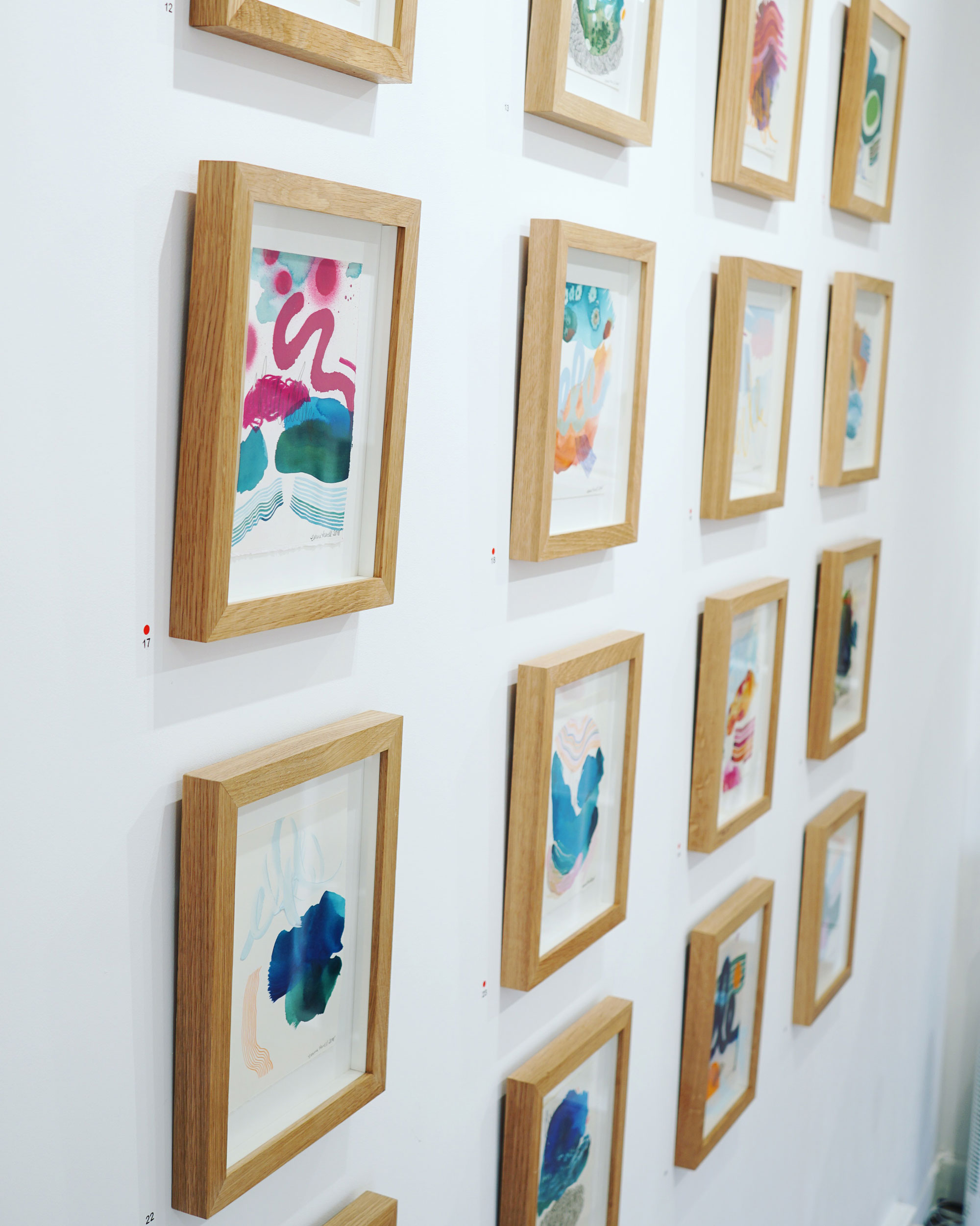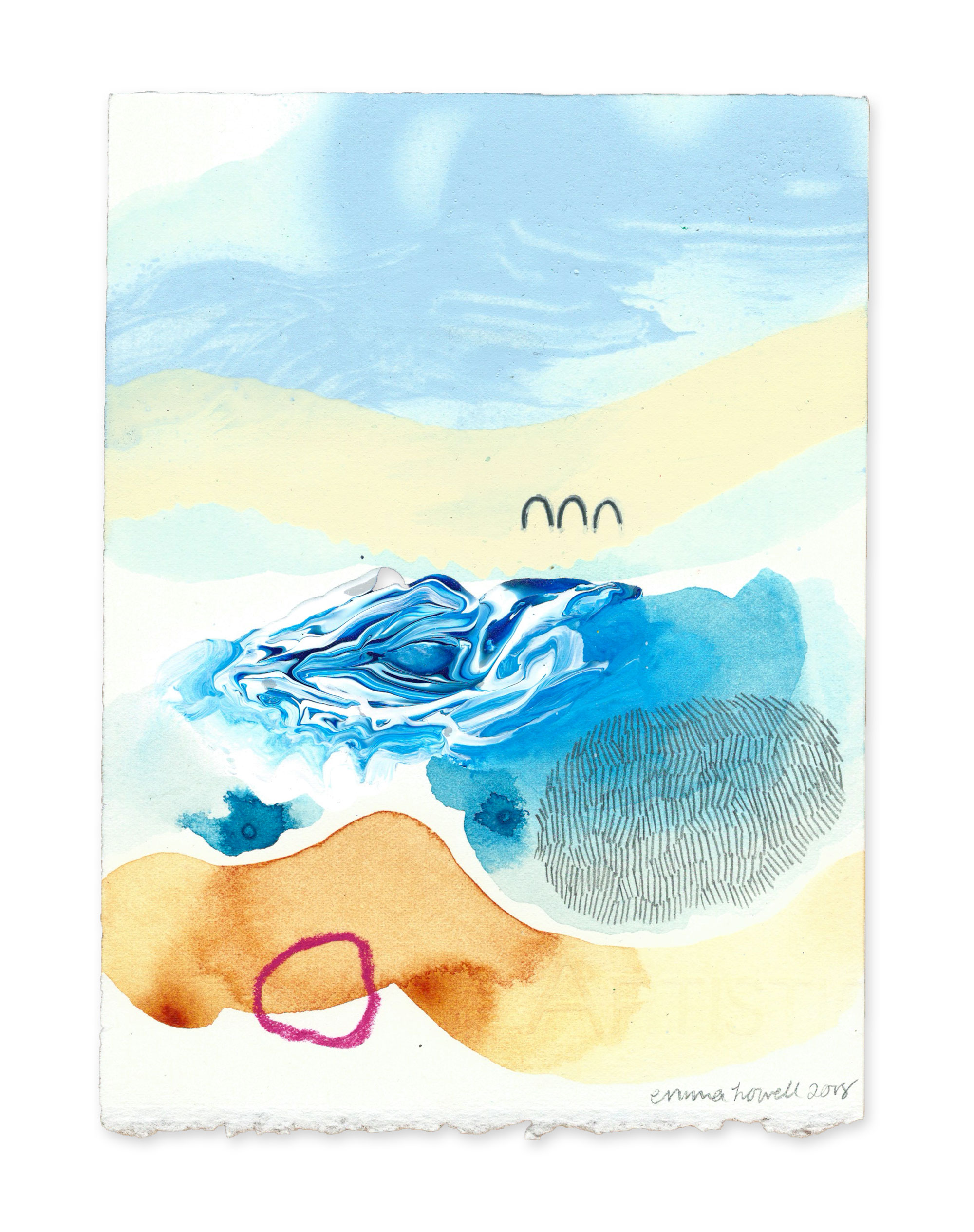Emma Howell
13 August, 2018

How do you experience the world?
Let’s use going for a walk as an example. When you’re walking through a woodland area, how do you experience it?
Do you look up and around, allowing yourself to be engrossed by the height of the trees? Are you taking in the colours: the deep earthy browns, fluorescent greens or rusty oranges? Is your nose picking up the scent of woodland air? Are your ears tuning in to the sound of rustling leaves beneath your feet? What about the temperature of the stream; how cold is it?
Or are you just going for a walk?
Not all of us tune into our surroundings in this way. We’re all different and there is no right or wrong way about it.
I tune in as much as I can.
I used to underappreciate the world. I avoided anywhere outside my house and found the mere act of existence to be bleak and taxing. This was grief.
As many of you already know, painting was what flipped life around for me after my Dad passed away. As months of random, expressive painting went on, my need and eagerness to find inspiration grew and grew. Therefore, the outside world became appealing. I’d stare out the window of my studio and my eyes would dart from side to side as I watched the neon red car lights flicker by, again and again. I started to notice the different pitches of car horns, the sound of the weekly runners’ feet pitter pattering on the pavement and the whistling of the wind.
I was tuning in.
This was the inspiration I was longing for.
Sights and sounds became marks and colours.
I found the courage to step outside again and my practice has continued to develop ever since.
My journals are where I document the things I experience: sounds, textures, colours, conversations and thoughts. In doing this, I’ve built a deeper appreciation and more colourful affinity towards nature, society and culture, a.k.a. the world.
The How Series
A fast, corkscrewed mark could be a moment of frustration, the rhythm of the wind or a roughly textured surface; a bold puddle of blue could represent deep feelings of melancholia, a mass of rain or simply, the hue of the sky; repetitive lines could be a meditative exercise, contours of cliffs or a boring conversation; shapes could be sourced from negative spaces, pebbles or rows of trees.
Each work in the series doesn’t necessarily represent one place, at one given time. They’re deconstructions and chosen combinations of colours and marks recorded in my journals.
They represent how I see, how I hear, how I feel and how I understand.
For me, these paintings will act as reference points for future works, like a visual dictionary. For you, perhaps a reminder that there is more than one way to view this world.
Be a How Collector
After the opening night of my first solo show, where I exhibited 20 framed “How” paintings, I’d already sold 18 of them, locally and internationally (still can’t believe it).
It seemed that many gallery visitors were captivated by their presence, with some telling me what they saw in a piece and how it made them feel. It was fascinating listening to the wide variety of interpretations. We all see things so differently; it’s incredible.
In light of the success of this series, I’ve now released 18 more that are available to collect.
(Update: There are now only 7 Hows left all together.)
How #25 Acrylic, spray paint, pencil and soft pastel on paper, 5″x7″, 2018. View work






